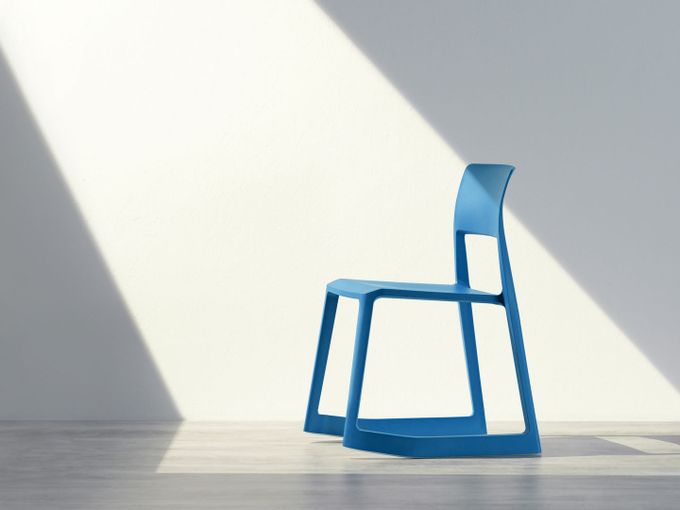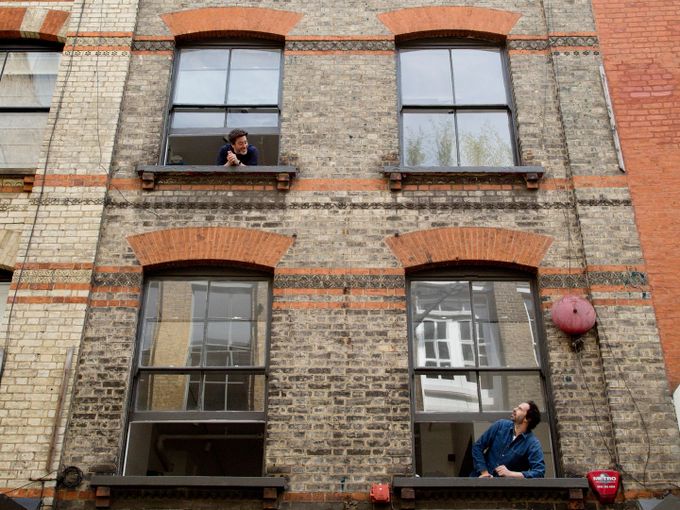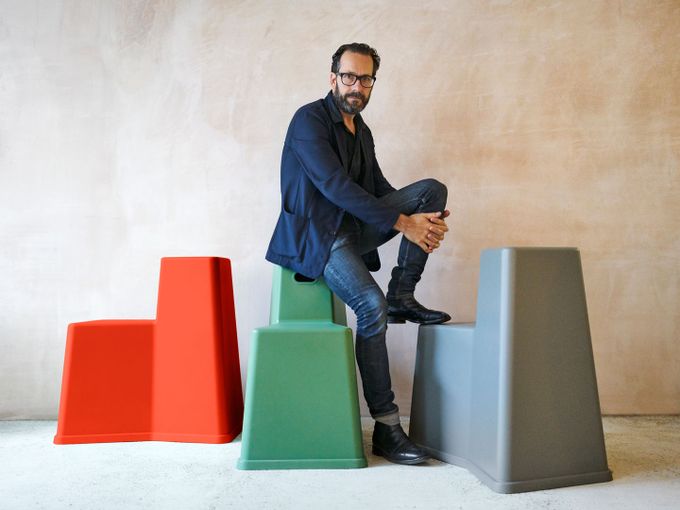Tracing Twenty Years in One Evening
Recapturing a Night with Barber & Osgerby

The Pacific Chair, launched in 2016, was Edward Barber and Jay Osgerby’s first venture into office seating. The designers recently presented this and other projects in Milan during a crowded lecture at Fondazione Giangiacomo Feltrinelli, the brand new headquarters of the Italian publishing house – designed by Swiss architects Herzog and De Meuron. Flipping through the pages of a new Phaidon publication on their work, Edward and Jay introduced their British design studio’s twenty-year history in a lively talk.
Edward Barber and Jay Osgerby met while studying for their master’s degrees in architecture at the Royal College of Art in London and they opened their studio in 1996. There, they also met Jana Scholze, now an acclaimed critic and lecturer at Kingston University. She has edited their latest publication tracing over twenty years in the career of a practice known for the way in which it combines advanced formal research with an experimental use of materials.
Edward Barber and Jay Osgerby met while studying for their master’s degrees in architecture at the Royal College of Art in London and they opened their studio in 1996. There, they also met Jana Scholze, now an acclaimed critic and lecturer at Kingston University. She has edited their latest publication tracing over twenty years in the career of a practice known for the way in which it combines advanced formal research with an experimental use of materials.
“Barber and Osgerby, Projects” (Phaidon) was published in September 2017. It is divided into three sections: “Folded Structures” which contains and explains experiments with architectural model-making materials turned into 3D objects; “Frameworks” is about projects defined by lightweight construction; “Volumes” displays a collection of pieces whose form or character was created through shaping and sculpting.


Particularly esteemed for their furnishing and lighting designs, Barber and Osgerby have collaborated with top European companies in this sector. Their work is held in permanent museum collections around the world, including the Victoria and Albert Museum and the Design Museum in London, the Metropolitan Museum of Modern Art, New York and the Art Institute of Chicago. In 2007 they received the title of Royal Designers for Industry from the Royal Society of Arts and in 2013 the designers were each awarded an OBE for their service to the design industry. Both hold honorary doctorates of art and lecture internationally.
The pair has been involved in the Milan Furniture Fair (Salone del Mobile) since 1998, and for the last ten years or so has also produced a number of environmental installations and temporary exhibits, like the memorable project for Sony in the Zona Tortona area during the 2010 Milan Design Week entitled “Contemplating Monolithic Design”.
The pair has been involved in the Milan Furniture Fair (Salone del Mobile) since 1998, and for the last ten years or so has also produced a number of environmental installations and temporary exhibits, like the memorable project for Sony in the Zona Tortona area during the 2010 Milan Design Week entitled “Contemplating Monolithic Design”.


In 2014, they installed a giant rotating reflective sculpture, that doubled the space of the Raphael Gallery in the Victoria and Albert Museum. Two years later, they set up a large weather-measuring installation in the courtyard of Somerset House as the UK’s contribution to the first London Design Biennale. They are perhaps best known for the Olympic Torch they created for London 2012: a trilateral form, representing the third time the Olympic Games were held in London. The torch was constructed from aluminium alloy perforated with 8,000 circles, representing the 8,000 individuals who took part in the torch relay.


Edward Barber and Jay Osgerby achieve a particular harmony between graphic features and the use of colour. In many of their products, symbols and colours are used to define functions and parts, with no decorative connotation. In 2001 Barber and Osgerby established their architecture design practice Universal Design Studio, and in 2012 they founded Map Project Office, a company specialising in research and strategy-led design. Barber and Osgerby’s career reflects a modern approach to different scenarios, and, during Milan’s evening they were able to transmit knowledge, passion and ethics of design. Material culture needs interpreters like them.
Publication Date: 5.1.2018
Author: Marco Sammicheli
Bilder: © Barber & Osgerby Studio, David Brook, Kevin Davies, Lee Funnell, Tina Hiller, Sandro Sodano, Lorenzo Vitturi





